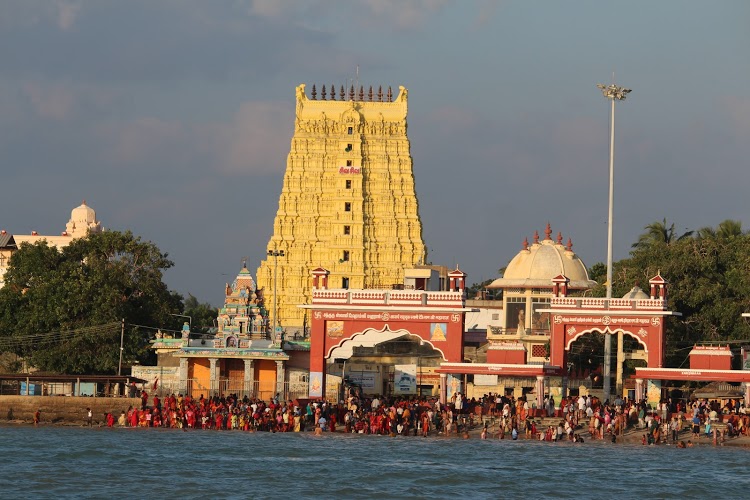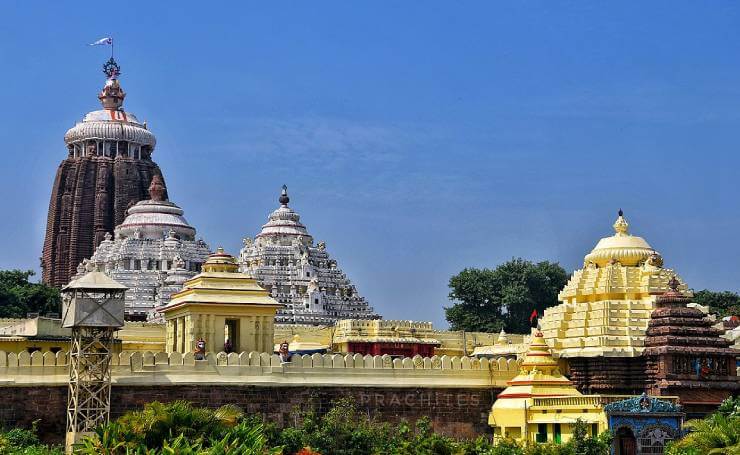Nestled on the serene island of Rameswaram in Tamil Nadu, India, Rameshwaram Dham Temple stands as one of the holiest shrines dedicated to Lord Shiva. Revered by millions of devotees across the world, this ancient temple holds deep significance in Hindu mythology and is part of the famous Char Dham pilgrimage. It is a destination that draws pilgrims and spiritual seekers alike, offering a chance to connect with the divine while exploring the rich cultural heritage of the region.
The Mythological Significance of Rameshwaram
Rameshwaram, located on the southeastern tip of India, is believed to be the place where Lord Rama, the hero of the Ramayana, worshipped Lord Shiva to seek his blessings before embarking on the battle against Ravana, the demon king of Lanka. According to Hindu mythology, after defeating Ravana and rescuing his wife Sita, Lord Rama wanted to atone for any sins he might have committed during the war. To purify himself, he decided to build a temple dedicated to Lord Shiva, the supreme deity of destruction and transformation.
The name Rameswaram is derived from Rama (the deity) and Eswaram (meaning God), making it the “abode of Lord Rama.” It is believed that Lord Rama himself established the sanctum of Lord Shiva, known as Ramalingeswarar, making this temple even more revered.
The Architecture of Rameshwaram Dham Temple
Rameshwaram Dham Temple is renowned for its stunning Dravidian-style architecture, which is a hallmark of South Indian temples. The temple complex spans over 15 acres and is known for its grand structures, intricate carvings, and majestic gopurams (gateway towers).
The main temple houses the idol of Ramalingeswarar (Lord Shiva), along with that of Rama and other deities like Sita, Lakshmana, and Hanuman. The structure is designed in such a way that it creates a cosmic balance between Lord Shiva and Lord Rama, signifying the harmonious relationship between the two deities in Hindu mythology.
One of the most striking features of the temple is the longest corridor in any Hindu temple, which stretches over 1,200 meters and is supported by over 4000 pillars. The stone pillars are intricately carved with depictions from Hindu mythology and offer a glimpse into the skilled craftsmanship of ancient artisans.
The Sacred Waters of Rameswaram
Another unique aspect of Rameswaram is its association with the sacred waters of the Agni Theertham, a holy sea located near the temple. Pilgrims often take a ritualistic dip in the Agni Theertham to purify themselves before entering the temple. It is believed that a dip in these waters washes away sins and grants spiritual liberation.
Moreover, there are 22 holy wells in and around the temple, each of which is associated with a specific deity. Devotees take a holy bath in these wells as part of their purification ritual before offering prayers inside the temple.
The Spiritual Experience at Rameshwaram
A visit to Rameshwaram is more than just a pilgrimage; it is an immersive spiritual experience. As you walk through the grand corridors, you can feel the energy of centuries of devotion and reverence that have accumulated in the temple. The serene atmosphere, the chanting of mantras, and the scent of incense create an ambiance of peace and tranquility.
The temple priests, known for their deep knowledge of the rituals, perform elaborate pujas and aarti ceremonies throughout the day, adding to the spiritual atmosphere. The evening Aarti is particularly special, with the temple lit up by thousands of lamps, creating a mesmerizing sight that draws both devotees and tourists alike.
Rameshwaram and the Char Dham Pilgrimage
Rameshwaram is one of the four sacred pilgrimage sites of the Char Dham Yatra, which includes Kedarnath, Badrinath, and Dwarka. The Char Dham pilgrimage is considered the pinnacle of spiritual journeys for Hindus. The temple’s historical importance as the site where Lord Rama is believed to have worshipped Lord Shiva makes Rameshwaram an indispensable stop for devotees.
The Char Dham Yatra is a journey that signifies the importance of spiritual purification and the quest for moksha (liberation). Rameshwaram, with its rich history, divine presence, and sacred waters, is an essential part of this revered circuit.
How to Reach Rameshwaram Dham Temple
Rameshwaram is well-connected to major cities in Tamil Nadu and beyond. The nearest airport is Madurai International Airport, approximately 150 kilometers away, which is connected to cities like Chennai and Bangalore. The temple is also accessible by train, with the Rameshwaram Railway Station being just a short distance from the temple complex.
For those traveling by road, Rameshwaram is well-connected by buses and taxis from nearby towns and cities. The island’s charm is further enhanced by its scenic coastal views, making the journey to the temple a visually enriching experience.
Best Time to Visit
The best time to visit Rameshwaram is during the winter months, between October and April, when the weather is more pleasant. The temple sees an influx of visitors during festivals like Mahashivaratri, Ram Navami, and Dussehra, so planning a visit around these times can add to the spiritual fervor.


